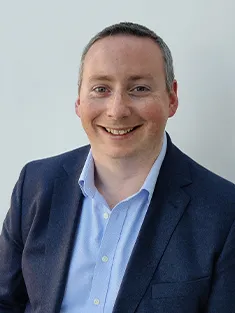Winner: 2021 Materials Chemistry Division Early Career Award
David Scanlon
University College London
For contributions to materials modelling of conducting oxides.

Professor Scanlon's materials theory group (SMTG) uses computational models to understand what happens on the atomistic scale in materials that are of interest for many applications in renewable energy. Often, experiments can only give you a certain amount of information, and calculations can tell you what is actually occurring at the very local level, like when you replace one atom with another. The group also uses these models, which are based on computational chemistry, to predict new materials, or to predict the property of materials. These insights will allow for the design of better materials that we use in our everyday life: for example, the materials that are used in the screens of smart phones, tablets, laptops and flat screen TVs. The SMTG's knowledge of how these materials work on the atomic scale can be used to tweak the properties of materials, and to inform experimentalists so that better materials can be developed, improving the quality of our devices' performance.
Biography
Professor David Scanlon is Chair of Computational Materials Design at the Department of Chemistry, University College London, where he leads the Scanlon Materials Theory Group (SMTG). David gained his BA.(Mod) Computational Chemistry in 2006 and PhD in Chemistry in 2011 from Trinity College Dublin, where he carried out his research under the supervision of Professor Graeme W Watson. In 2011 he moved to the UK to University College London (UCL) to take up a Ramsay Fellowship in the Department of Chemistry, hosted by Professor Sir Richard Catlow, FRS. In September of 2013 he was appointed to a Lectureship in the Department of Chemistry at UCL, a joint appointment with Diamond Light Source, and was promoted to Reader in 2016 and Professor in 2018. The SMTG is made up of 5 PDRAs, 12 PhD students and 11 Master students, and has a special interest in computationally-driven materials design and characterisation. The group’s work is at the forefront of the global effort to explore new materials based on computations and to advance the capacity of first principles calculations to predict materials properties. The group is currently working on new materials for Li- ion batteries, understanding novel materials for photovoltaics and photocatalysis, and optimising materials for thin film displays. The group regularly publishes with experimental groups working in complementary areas of materials science from around the globe.
This prize showcases the importance of predictive modelling of solid state materials and I am excited to see the future developments of this emerging field.
Professor David Scanlon
Q&A with Professor David Scanlon
Who or what has inspired you?
I have been extremely lucky to have worked with very inspiring scientists since day one of my research career. My PhD supervisor Professor Graeme Watson from Trinity College Dublin is an amazing mentor, and he gave me the confidence and freedom to develop my own ideas. I count him as a close friend, and I often still go to him for advice, ten years after leaving Trinity. My subsequent Ramsay Fellowship was hosted by Professor Sir Richard Catlow, who amazes me with his constant scientific curiosity which has never been diminished, even under the heavy burden of university leadership and admin. His drive to give back to the community and those less fortunate is also a huge inspiration. My colleagues at UCL, my many collaborators, and especially the talented scientists I am fortunate enough to work alongside in my group, all inspire me on a daily basis. It is very easy to go to work when you know that interesting science can pop up at any moment!
What motivates you?
Finding new insights into materials really motivates me, especially if you are the first person to know it! That is what science is about – pushing the boundaries of our knowledge. Most of our work is aimed at renewable energy applications also, so we are helping in the push for net zero emissions, which is a big motivation.
Why do you think teamwork is important in science?
Teamwork is vitally important. No one person has all the answers, understands all the computational and experimental techniques, or has all the synthesis skillsets. Collaboration and teamwork by people whose experience covers a wide range will nearly always produce more compelling science than individuals working on their own, and often at a much faster pace. You also build friendships through collaboration, which makes working together even more rewarding.
What is your favourite element?
Right now I really like antimony as we are looking at antimony selenide for solar cells and new transparent conducting oxides featuring Sb. If you ask me in a month, however, it could be something completely different!